Injustice 2 Review
There are three groups of players when it comes to fighting games.
There’s the first group who don’t really care too much about fighting games. Every now and then a new Street Fighter or Tekken will rumble onto the shelves and they’ll want to mash buttons as Ryu/Kazuya/Ken/Paul (delete as appropriate). They will shout “CHEAP” if you dare do the same move twice in a row and mumble “cheap” if you pick the same character twice in a row. This group is impressed with big names, big special moves, big graphics, big everything.
Then there’s the second group, the genre aficionados. This group studies fighting games and attacks non-believers with such fanatical fervour, it borderline qualifies as controversial religion. This group will learn tier lists, live in practice mode, memorise frame data (translation from moon language into English: frame data means the properties of each move like how quickly it starts up. Just mention frame data if anyone from this group starts talking to you. It’s how you survive such encounters). They treat fighting game outsiders with suspicious disdain and cross-examine insiders waiting for a single mistake or flaw they can pounce on. They are the hardcore of the hardcore and they want fighting games that reward the endless hours they put in and an online mode that ticks alone without any noticeable lag.
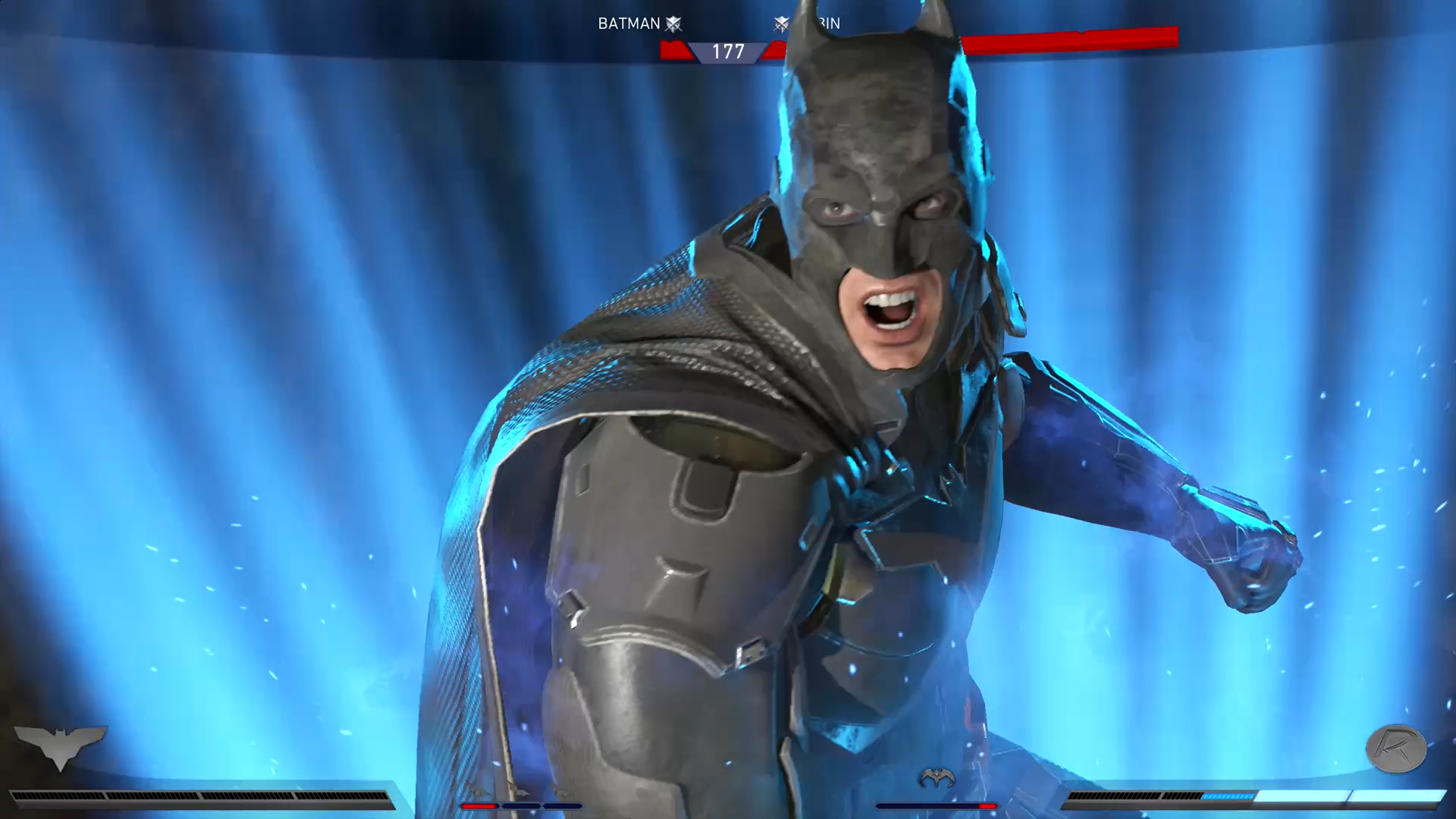
Then there’s the third group, who just want to play something quick and easy to break up mammoth FIFA sessions. They want something that instantly tickles their metaphorical balls, offering immediate reward for almost no effort. Then again, don’t we all want that? Maybe we are all the third group, just wanting a quick tickle to give us hope during our darkest hours.
What? Anyway, yes. The point is this: Injustice 2 is that rare fighting game that satisfies all three fighting game groups.
It’s big. It’s flashy. It’s deep. It’s strategic. It’ll likely be just as impressive weeks and maybe even months down the line as it will when you first pick The Flash and slam your opponent into a T-Rex.
That starts with its secret trick – anyone can play Injustice 2. Literally anyone. It’s been designed that way, specifically accommodating even the most sausage-fingered of buffoons. Windows to do special moves are generously large, mashing buttons is usually good for a barrage of two or three attacks, and you can press the shoulder buttons at the same time to spend all of your meter on a holy-shit-this-is-AWESOME super move.
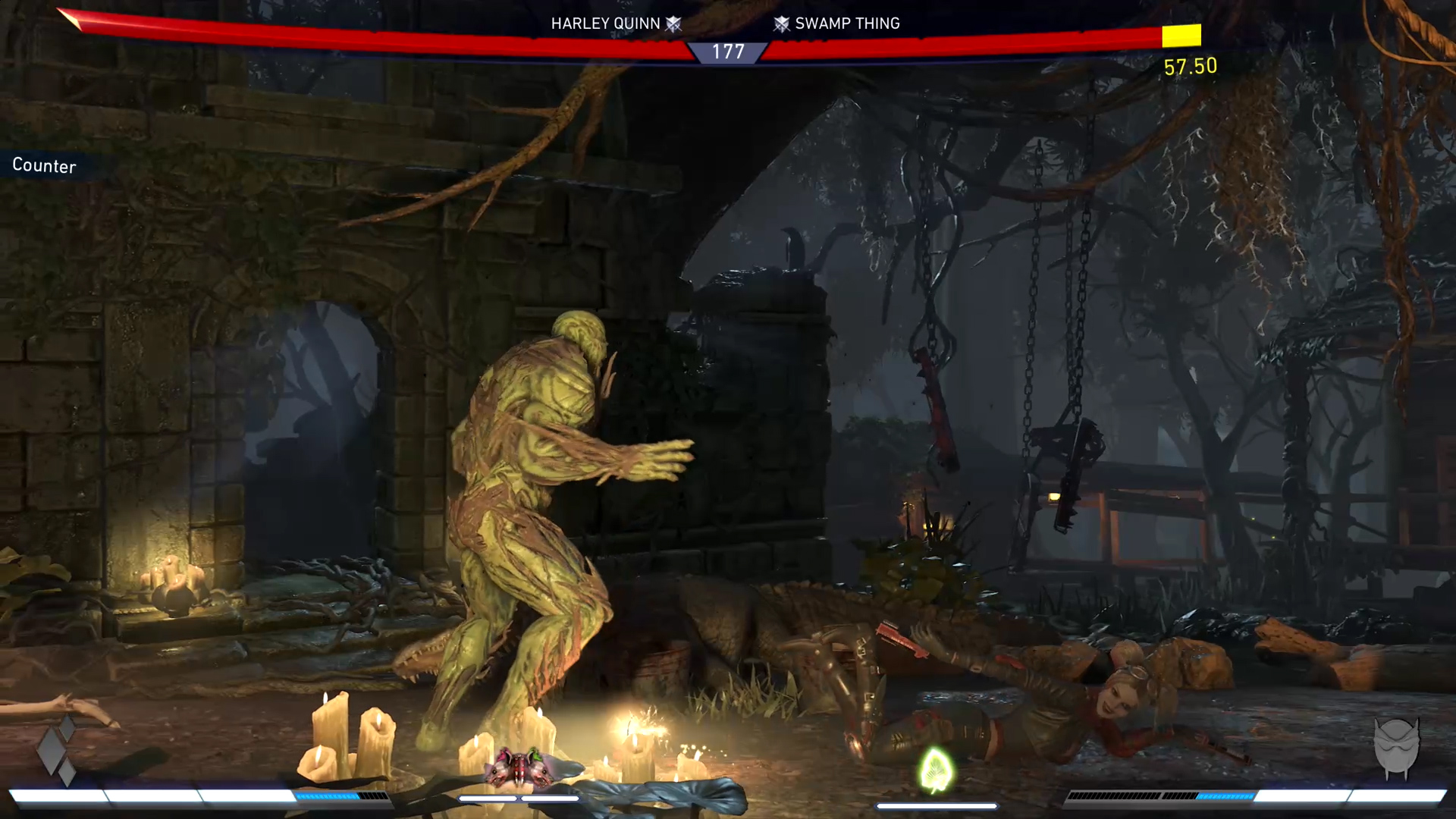
“But wait!” you cry, dropping your arcade stick in horror, choking on frame data. “What about the pros? What about those of us who weren’t born with sausages for fingers?”
Look. YOU. Stop pretending you’re a fighting game veteran. Fighting game veterans already know NetherRealm Studios proved its credentials with the original Injustice, which wiped away sad, horrible memories of Mortal Kombat vs DC.
Injustice married a lot of cool innovative gameplay tricks to solid 2D fighting – the way you could grab and throw objects from the environment, smash opponents through the arena into a new stage or ‘clash’ by gambling your meter against your opponents. If that sounds a bit too technical, it’s really not. It’s not as though any of these moves are performed by charging back on the stick then pressing down-towards, down-back, down-towards, back, towards, both punches and both kicks at the same time. While holding block. With your eyes closed. It’s still just a few button presses at most. What these innovations all have in common is they combine visual fireworks with solid gameplay, giving you more options to lay on the spectacle while putting a beatdown on your opponent.
That’s all returned for Injustice 2 as has its best trick: Traits. Each character has their own unique trait, an ability that can be called upon during the match. Batman summons bats, Green Lantern powers up his ring (ahem), Joker speeds up, and so on. Injustice 2 is packed with new characters and playing around with their traits is a big part of the initial appeal. Poison Ivy calls out a small Plant Minion that spits ooze at her opponents. Supergirl shoots eye-lasers. Scarecrow surrounds himself with fear toxin, building towards an extra special move by getting close. Doctor Fate, er, turns red.
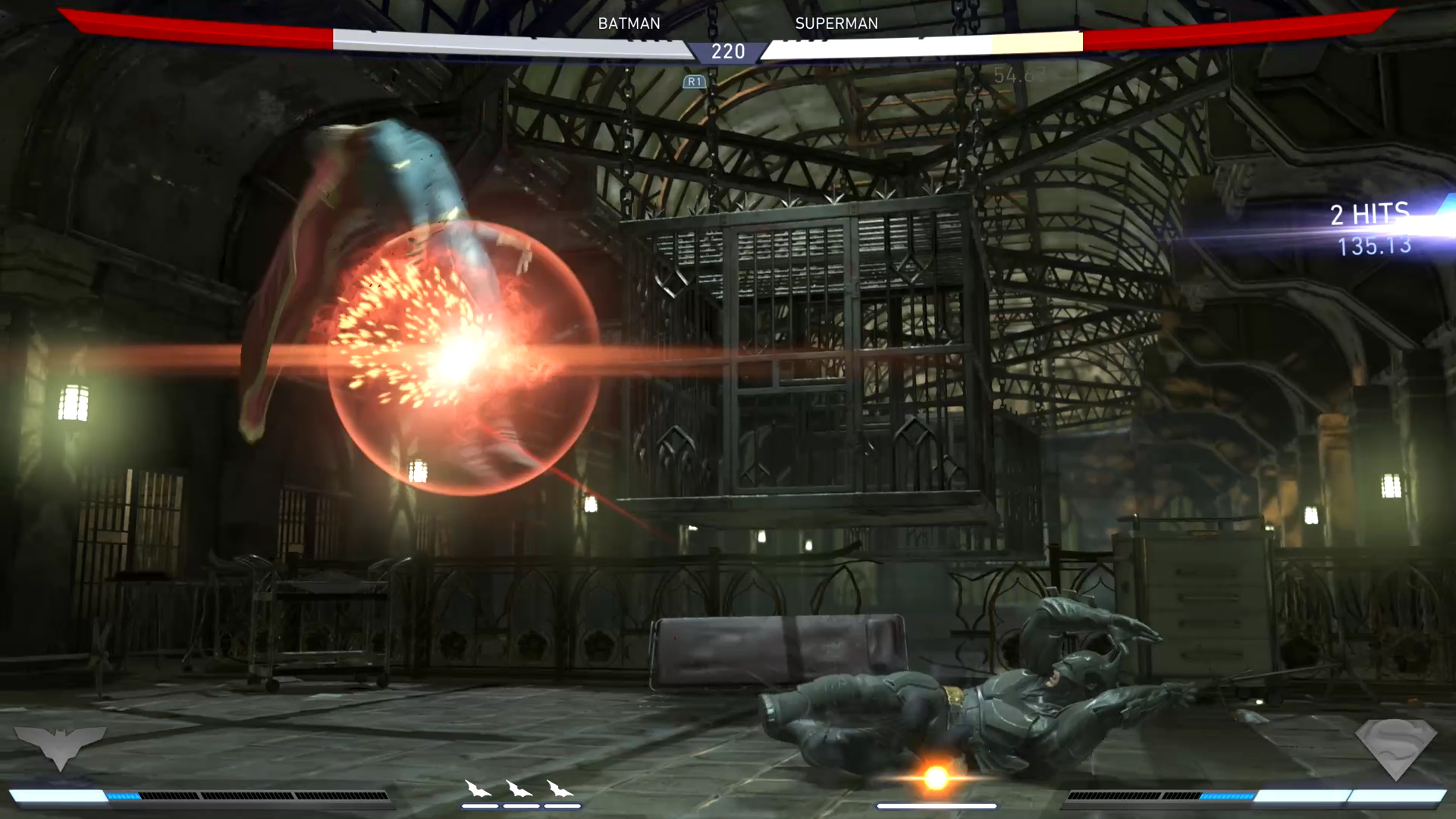
This being a sequel, there are also a few extra tweaks to the gameplay. You can now Roll Escape, burning meter to turn your forward dash into a near full-screen roll. It’s a useful tool for getting out of the corner alive or closing the gap against projectile spammers. You can also burn meter to Air Escape, allowing you to flip out of combos after you’ve been launched into the air. They’re nice defensive options without feeling too powerful.
NetherRealm has built a reputation for big, bruising story modes through Injustice and Mortal Kombat, so it’s little surprise that the tradition has been kept alive here. The story follows on from the ending of Injustice, with Batman et al recovering from the events of that game. There’s no point going into too much depth here and ruining the story beats for you but you should still know a few things: it’s visually amazing (the most life-like characters in any game? Possibly), you can choose which characters to fight as at certain points, and it’s better than anything Zack Synder has ever done with DC. Which isn’t a high bar to clear, there are Vines out there that have more compelling drama in six seconds that Synder managers in his six-hour marathons, but Story Mode is good.
Another big change has come with the introduction of Multiverse, the mode that will provide the single-player legs after the credits have rolled on Injustice 2’s story. Multiverse is the replacement for S.T.A.R. Labs from the original Injustice, home to modifiers that stretched the gameplay as far as it would go – fighting while time slowed down and sped up, while asteroids fell from the sky, while you were poisoned and so on. If that sounds weird, it was. It also had bizarre mini-games, like playing as The Flash racing Superman around the world or playing as a cat dodging night-time security in a museum (honestly).
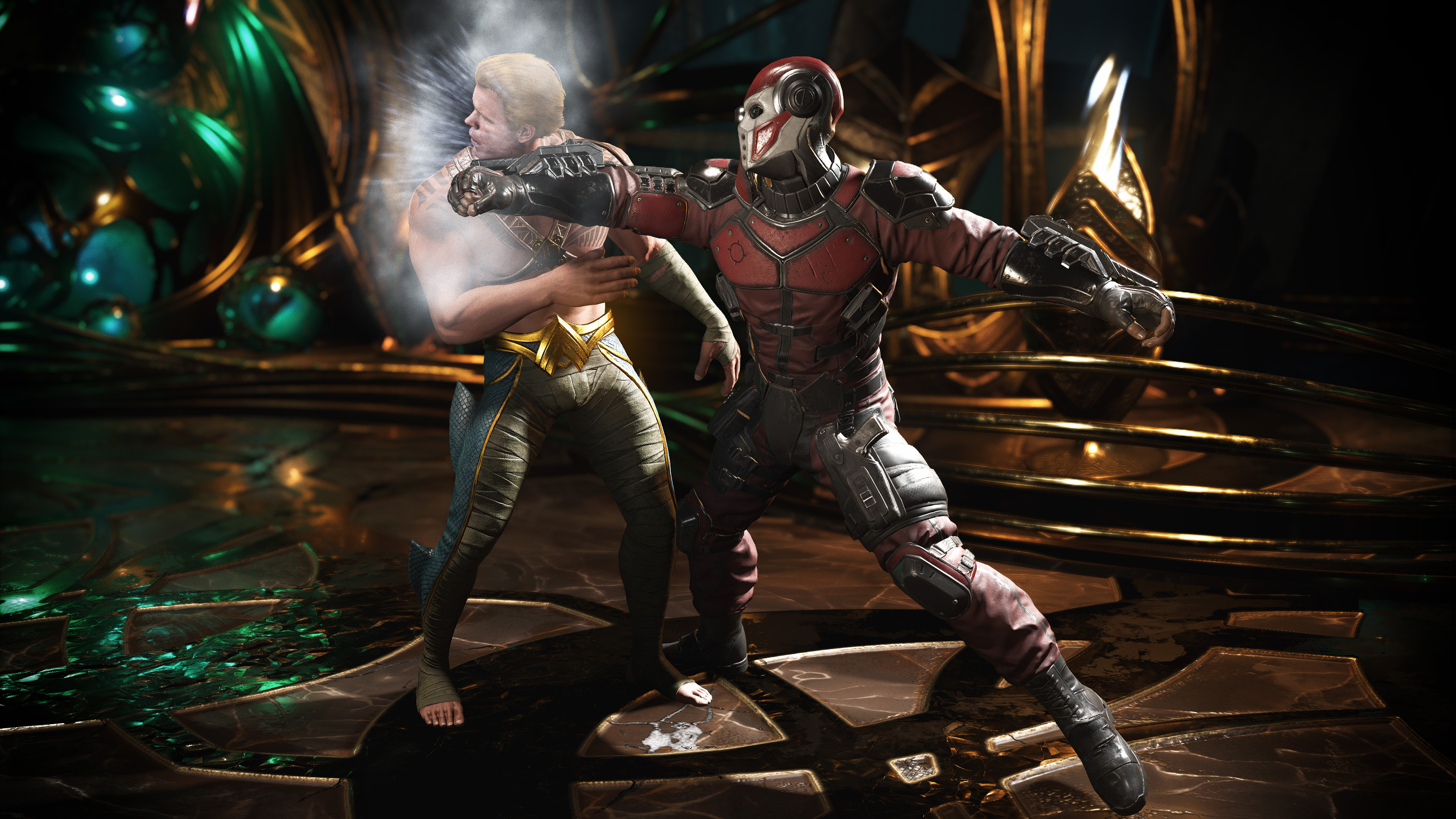
The bizarre mini-games have gone but the modifiers remain, so you can still fight ‘normal’ matches under weird and wonderful conditions. But while the modifiers keep the gameplay fresh, the real point of Multiverse is that you can unlock loot, with gloriously daft names like Destructive Maggie’s Favorite Whip and Reinforced Disarming Sleeves of Judoka. The loot buffs four attributes: Strength, Ability, Defense, and Health. Epic loot adds extra properties too, such as reducing damage for arena transitions, increasing character XP and so on. You can even add abilities to your customised loadout which change special moves. Best of all is you can change your look by equipping loot, which becomes a bigger selling point that unlocking an armguard that has +28 Health or whatever.
And yes, you can ‘disable’ loot’s extra properties, so you can build new outfits for characters without worrying about petty squabbles over balance.
Speaking of balance, the real test for multiplayer lies in the weeks and months ahead, as players squeeze any advantages they can out of the roster and NetherRealm tries to keep up with patches. The good news is that the online mode is robust and holds up.
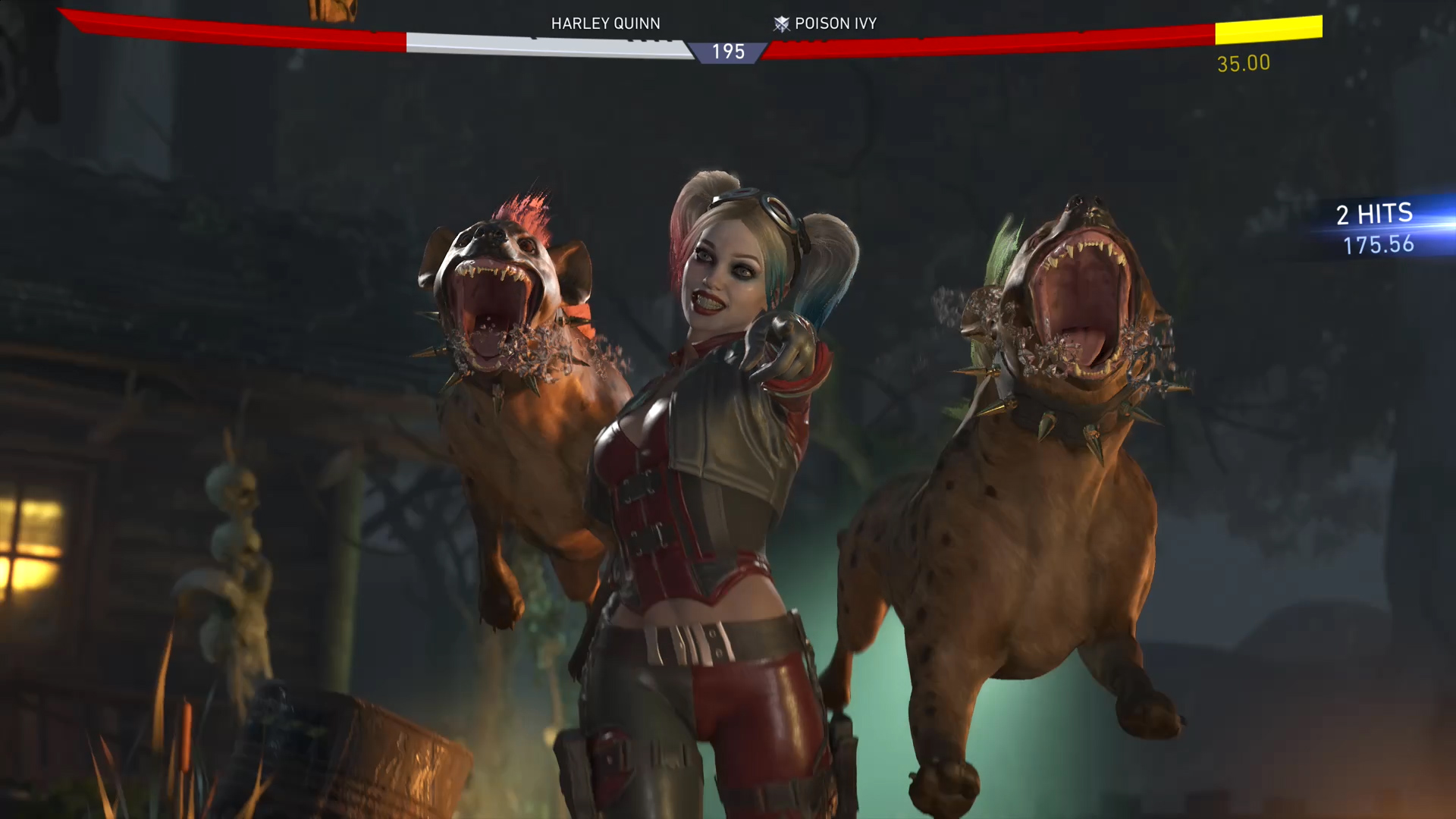
The only real negative you can aim at Injustice 2 is that while it’s been beefed up in some areas, it’s lost some muscle elsewhere. A surprising number of characters have been dropped to make room for the new faces. Solomon Grundy, Sinestro, Deathstroke, and Lex Luthor are a few of the names that are nowhere to be seen, especially annoying given we could have had Lex Luthor versus Brainiac, Sinestro versus Atrocitus, and so on. It’s always disappointing when fighting games drop characters but it seems to especially hurt in a fighting game series where dream match-ups is such a big part of the appeal.
And while Multiverse is likely to have longer legs than S.T.A.R. Labs thanks to its missions constantly refreshing and the addictive dripfeed of loot powering it, losing the wackier mini-games is still a shame. It would be ridiculously unfair to dock points because Injustice 2 doesn’t let you play as a cat dodging a museum’s security system but S.T.A.R. Labs injected comedic lightness that counterbalanced the moody DC Comics tone that dominates elsewhere.
But those are two minor flaws in a package that’s bursting with gameplay depth, modes, unlockable items, details for DC Comics fans to discover. When all is said and done, Injustice 2 is one of the best fighting games around – whatever fighting game group you belong to.

